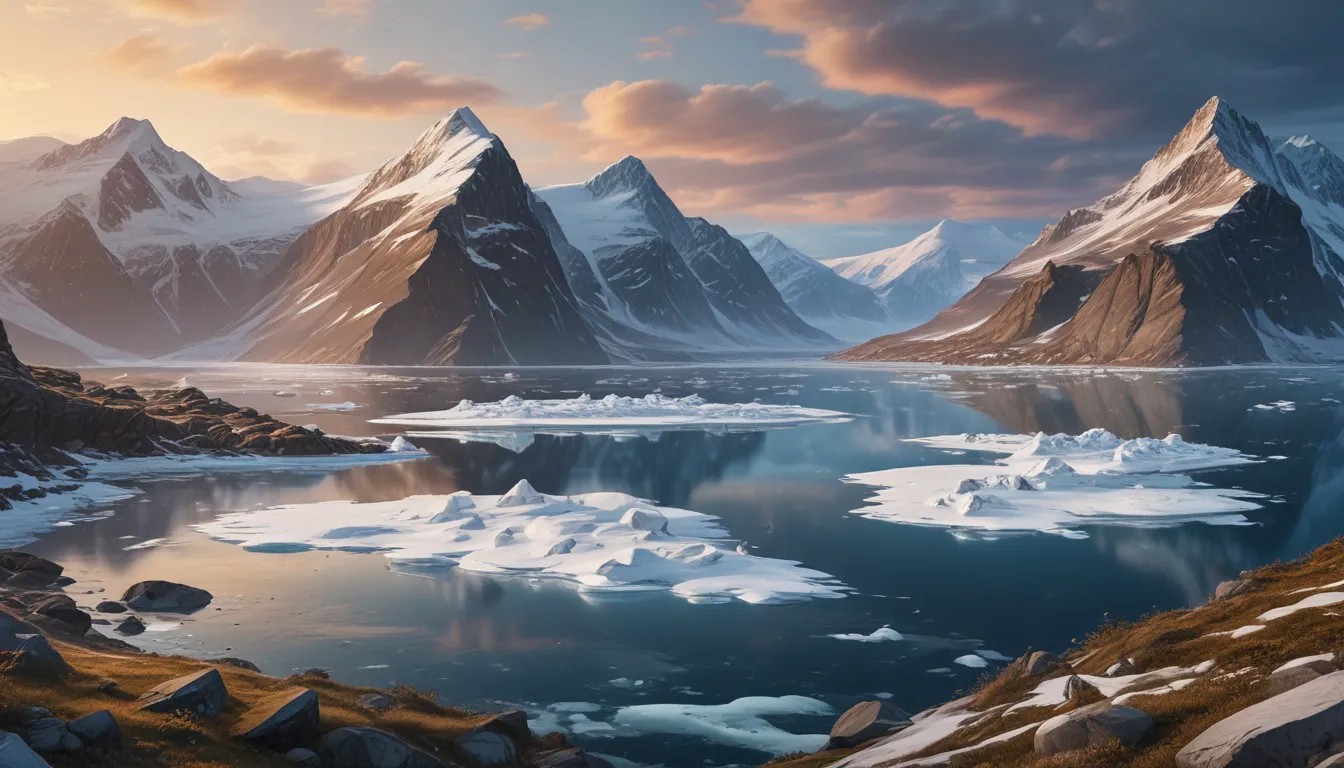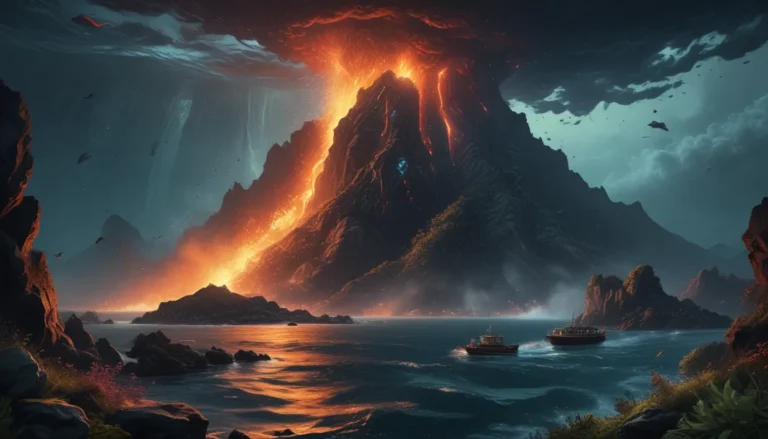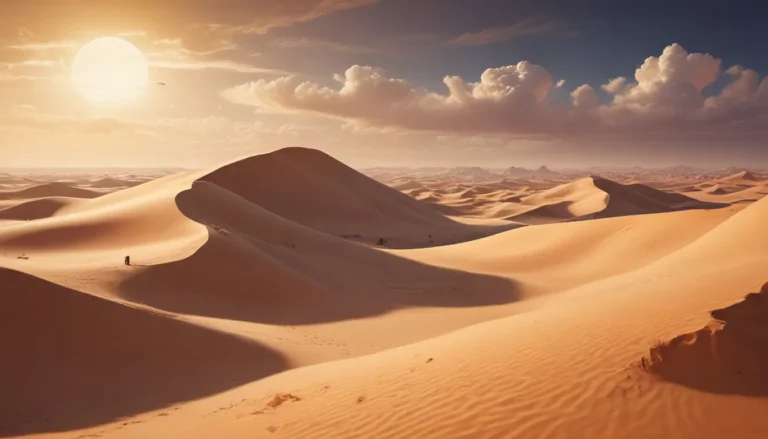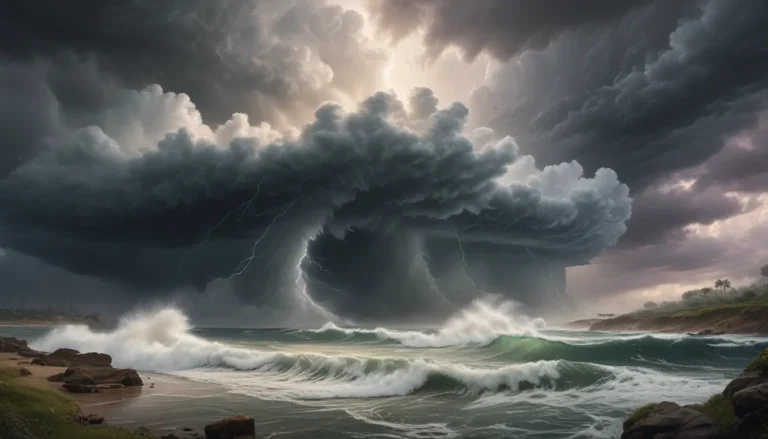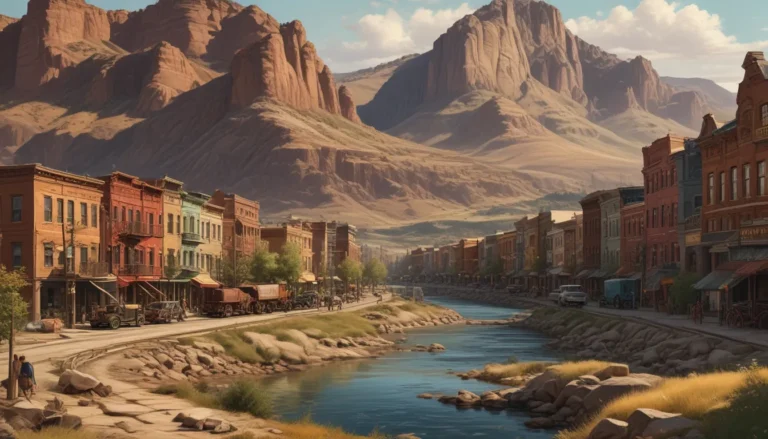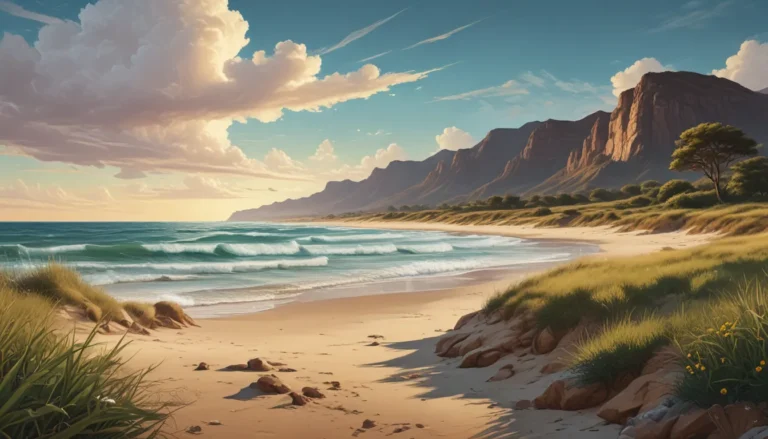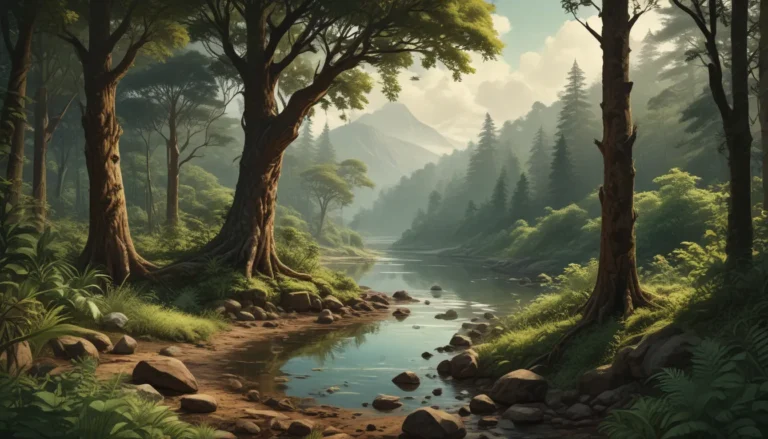A Note About Images: The images used in our articles are for illustration purposes only and may not exactly match the content. They are meant to engage readers, but the text should be relied upon for accurate information.
The Arctic Circle is a region shrouded in mystery and wonder, captivating adventurers and nature enthusiasts with its unique ecosystem and rich history. Spanning across countries like Canada, Russia, Greenland, and Norway, this icy expanse holds many secrets waiting to be uncovered. From the enchanting Northern Lights to the breathtaking landscapes, the Arctic Circle is a place like no other, offering a glimpse into a world of unparalleled beauty and resilience.
Unveiling the Mysteries of the Arctic Circle
The Arctic Circle is not just a geographical line on a map, but a gateway to a world of wonders waiting to be explored. Let’s delve into 18 astonishing facts about this captivating region that will leave you in awe and inspire you to embark on your journey of discovery.
The Imaginary Line of the Arctic Circle
The Arctic Circle is an imaginary line of latitude that encircles the Earth at approximately 66.5 degrees north of the Equator, marking the boundary of the Arctic region. It serves as a symbolic dividing line between the temperate and polar zones, encompassing a vast expanse of ice and snow.
Witnessing the Midnight Sun
One of the most unique phenomena experienced in the Arctic Circle is the Midnight Sun, where the Sun remains visible for 24 hours a day during the summer months. This constant daylight creates a surreal and enchanting atmosphere, unlike anything you’ve ever seen.
Dancing Lights of the North
The Arctic Circle is famous for the mesmerizing display of the Northern Lights, also known as the Aurora Borealis. These colorful ribbons of light paint the night sky in a spectacular dance of nature, enchanting all who are fortunate enough to witness this awe-inspiring spectacle.
Wildlife Wonders of the Arctic
The Arctic Circle is home to a diverse range of wildlife, including iconic species like polar bears, Arctic foxes, reindeer, walruses, and various bird species. These animals have adapted to survive in the harsh conditions of the Arctic, showcasing the resilience and ingenuity of nature.
Climate Change and the Arctic Circle
Climate change has had a profound impact on the Arctic Circle, leading to the rapid melting of polar ice caps and changes in the region’s ecosystem. This environmental crisis not only affects the habitat of Arctic wildlife but also has far-reaching consequences for global climate patterns.
Eight Countries, One Arctic Circle
The Arctic Circle traverses through eight countries, each offering its unique landscapes and cultural heritage. From Norway to Russia, from Canada to Iceland, these nations share a common bond in their connection to the Arctic region and its natural wonders.
The Polar Day and Polar Night
The Arctic Circle experiences extreme variations in daylight, with periods of polar day and polar night during different seasons. In the winter months, the region plunges into darkness during the polar night, while the summer months bring continuous daylight during the polar day.
Embracing the Cold
Known for its frigid temperatures, the Arctic Circle has an average winter temperature of -34°C (-29°F), making it one of the coldest places on Earth. Despite the chilling conditions, the Arctic’s icy landscapes exude a beauty that is both stark and mesmerizing.
Abundance of Natural Resources
The Arctic Circle is rich in natural resources, including oil, gas, minerals, and fish, attracting economic activities like oil drilling, mining, and fishing. This abundance of resources has fueled debates over conservation and sustainability in the fragile Arctic ecosystem.
Global Climate Regulator
Due to its unique climate and geographical position, the Arctic Circle plays a crucial role in regulating the Earth’s climate. Changes in the Arctic can have far-reaching effects on global weather patterns and ocean currents, highlighting the interconnectedness of our planet.
Perpetual Day and Night
The Arctic Circle experiences the longest day of the year during the summer solstice, where the Sun never sets, and the longest night during the winter solstice, with 24 hours of darkness. These celestial events mark the passage of time in a land ruled by the Sun and the stars.
Frozen Ground and Permafrost
Permafrost, or permanently frozen ground, is a common feature throughout much of the Arctic Circle, presenting unique challenges for infrastructure development and construction. The presence of permafrost shapes the landscape and dictates the way of life in the Arctic region.
Bordering the Arctic Ocean
The Arctic Circle is surrounded by the Arctic Ocean, the smallest and shallowest of the world’s oceans, characterized by floating sea ice and a diverse marine ecosystem. The Arctic Ocean is a vital lifeline for the region’s wildlife and plays a crucial role in global climate systems.
Indigenous Cultures of the Arctic Circle
The Arctic Circle is home to several indigenous communities like the Inuit, Sami, and Yupik peoples, who have lived in harmony with the Arctic environment for centuries. These cultures offer rich traditions, art, and knowledge that provide insight into sustainable living in the Arctic.
Geological Marvels of the Arctic Circle
From glaciers to fjords, icebergs to tundra landscapes, the Arctic Circle boasts a diverse array of geological formations shaped by millions of years of ice and geological processes. These majestic landscapes stand as a testament to the power and beauty of nature.
Ecotourism in the Arctic Circle
The Arctic Circle is a popular destination for ecotourism, attracting adventurous travelers seeking to experience its stunning landscapes and observe wildlife in their natural habitat. Ecotourism promotes awareness of environmental conservation and sustainability in the Arctic region.
Flora in the Frozen North
Contrary to popular belief, the Arctic Circle is not devoid of plant life but hosts a diverse range of plant species adapted to survive in the cold and challenging environment of the region. These hardy plants play a vital role in the Arctic ecosystem, supporting wildlife and the fragile balance of nature.
Hub of Scientific Research
The Arctic Circle serves as a hub for scientific research, where experts from around the world study climate change, unique ecosystems, and environmental health. Their findings contribute to a better understanding of the Arctic’s significance and its role in global environmental sustainability.
Unveiling the Beauty and Complexity of the Arctic Circle
The Arctic Circle’s allure lies in its captivating beauty and profound significance, offering a glimpse into a world unlike any other. From the majesty of the Northern Lights to the resilience of Arctic wildlife, exploring the Arctic Circle is a journey of discovery that inspires awe and appreciation for the wonders of nature.
Embark on Your Arctic Adventure
In conclusion, the Arctic Circle beckons those with a thirst for adventure and a curiosity for the unknown. Whether you seek the thrill of witnessing the Northern Lights or the tranquility of a polar night, the Arctic Circle promises an experience like no other. So pack your warmest gear, open your heart to the beauty of nature, and embark on a journey to uncover the astonishing wonders of the Arctic Circle.
FAQs: Exploring the Arctic Circle
-
What countries does the Arctic Circle pass through?
The Arctic Circle spans across countries like Norway, Sweden, Finland, Russia, the United States (Alaska), Canada, Denmark (Greenland), and Iceland. -
How cold does it get in the Arctic Circle?
Winter temperatures in the Arctic Circle can plummet below -40 degrees Celsius (-40 degrees Fahrenheit), showcasing the extreme cold of the region. -
Can you see the Northern Lights in the Arctic Circle?
Yes, the Arctic Circle is renowned for offering some of the best views of the mesmerizing Northern Lights, also known as the Aurora Borealis. -
What kind of wildlife can be found in the Arctic Circle?
The Arctic Circle is home to a diverse array of wildlife, including polar bears, Arctic foxes, reindeer, walruses, seals, and various species of whales. -
Is it possible to visit the Arctic Circle?
Yes, there are tour operators and expedition cruises that offer guided trips to the Arctic Circle, providing an opportunity to explore this unique region. -
Are there any indigenous communities living in the Arctic Circle?
Yes, indigenous communities like the Inuit, Sami, and Yupik peoples have inhabited the Arctic Circle for thousands of years, preserving their traditional way of life. -
How far north is the Arctic Circle?
The Arctic Circle is located approximately 66.5 degrees north of the Equator, marking the boundary of the Arctic region. -
Does the Arctic Circle have a summer season?
Yes, the Arctic Circle experiences a summer season characterized by the midnight sun, where the Sun remains above the horizon for 24 hours. -
Are there any restrictions on visiting the Arctic Circle?
Visiting certain areas of the Arctic Circle may require permits or permissions, especially in protected wildlife reserves or indigenous territories. -
How can I prepare for a visit to the Arctic Circle?
To prepare for a visit to the Arctic Circle, pack suitable clothing for cold temperatures, ensure you have the necessary equipment, and familiarize yourself with safety guidelines for extreme environments.
Discover the Richness of the Arctic Circle
The Arctic Circle is a treasure trove of wonders waiting to be explored, from the enchanting lights of the North to the resilience of Arctic wildlife. Embark on a journey to uncover the secrets of this icy wilderness and immerse yourself in the beauty and complexity of the Arctic Circle. Let the Arctic’s allure inspire you to connect with nature, appreciate its fragility, and marvel at its breathtaking splendor.
